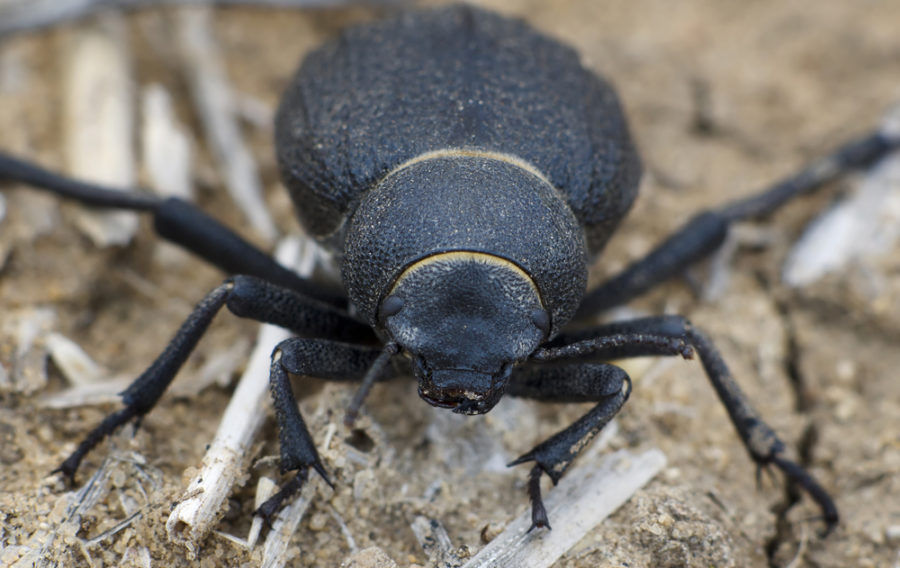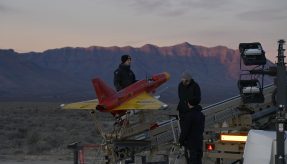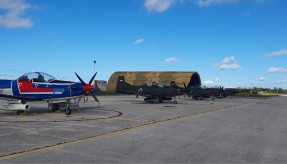
Writing for Defence Online, Chris Lawrence, Chief Scientist Advanced Services and Products and Fellow, QinetiQ delves into how nature is inspiring the latest in defence technologies.
Biomimetic designs, an approach to human innovation which uses nature as the blueprint to the advancement of modern technologies, have boomed in popularity in recent times.
In fact, according to the UK’s Biomimicry Innovation Lab, nature-inspired technology patents have increased by over 171% in the past ten years, with superpowers China and the United States leading the way.
Biomimicry has a long history with the defence sector. Camouflage has been used throughout recorded history (for example, Julius Caesar is known to have ordered the camouflage of ships with blueish-green wax back in 58 BC, to better match the sea and sky) and the designs used have often been bio-inspired.
But why are manufacturers still looking to nature to develop the latest equipment for the world’s military forces?
The value of nature’s ‘trial and error’ experiment
The value of biomimetic designs is found in the millions of years’ worth of development found in nature’s most intricate, complex systems. It’s well known that nature has not (and will not) follow a linear path. Instead, evolution continues to be a ‘trial and error’ experiment.
Within this experiment, nature has produced millions of organisms, each with its own bespoke systems and capabilities, and tested them to the point of extinction.
In an unforgiving process, organisms must confront a range of problems: maintaining situational awareness; avoiding predators; maintaining an ideal body temperature; finding food; and so on. Militaries confront many of these problems too.
And biomimetics isn’t necessarily about finding something new – more often, it looks at how things have been combined in interesting ways.
For example, creatures have a limited palette of scales, feathers, bones and so on. Because of these constraints, they sometimes achieve highly unusual results.
Therefore, for military designers wanting to develop the next capability, rather than starting from square one, they can look to nature for an almost endless catalogue of systems to study and incorporate into new equipment.
Biomimicry at work in modern defence
Modern examples of biomimicry in defence are incredibly varied, taking inspiration from organisms from every environment, up and down the food chain.
Take the Stenocara beetle as an example. Developers have studied the way it collects water from sea breezes, and how it can resist the incredible heat of the desert.
Analysis of this desert beetle has inspired research into new kinds of moisture collection capabilities and technologies with unique thermal properties.
In practical terms, this research could be used to collect potable water in hostile environments or to develop packaging that controls humidity and moisture in more efficient ways.
Not straying far from the Stenocara beetle, the Melanophila (also known as the ‘fire beetle’) has several traits that researchers have taken a keen interest in.
For one, the Melanophila has developed the ability to sense heat from forest fires that are occurring potentially miles away from their location.
This trait is powered by its sensing organs (sensilla), which allows it to detect water, chemicals, vibrations, heat, amongst other things.
They rely on nerve endings that typically terminate in complex mechanical structures in their exoskeletons. If a structure applies pressure to the nerve ending, then a signal is generated.
In the case of the Melanophila, the nerve’s tip ends are structured in a complex onion-like series of shells that expand when and contract when heated, creating a pinching action that is highly sensitive to radiated heat.
In the context of defence, these sorts of structures could be imitated using silicon, creating a new generation of micro-electromechanical systems (MEMS) based on insect sensilla.
Researchers have also looked to sea creatures to gain insight into some of nature’s most unique systems.
One of the better known (and more advanced) research examples is DARPA’s work on natural adhesives, which have taken inspiration from certain molluscs found on the sides of ships, or frog eggs that stick to rocks.
Through studying these seemingly inconsequential organisms, researchers have found that certain proteins are responsible for these sticky properties, and that these proteins can be engineered specifically to certain target materials.
What the future holds for biomimetic projects
Biomimicry will continue to be a constant source of inspiration and a hugely promising design tool for decades to come.
However, the key to ensuring that biomimicry can be used to produce consistently effective results will be the relationship between the academic community and industry figures.
Finding the appropriate applications for any innovative, nature-inspired technology is not a straightforward process, particularly when it’s being applied in the context of defence.
It’s therefore critical that researchers analysing these systems work in close collaboration with manufacturers so that the work of biomimetic projects is not vain.
If you would like to join our community and read more articles like this then please click here.







